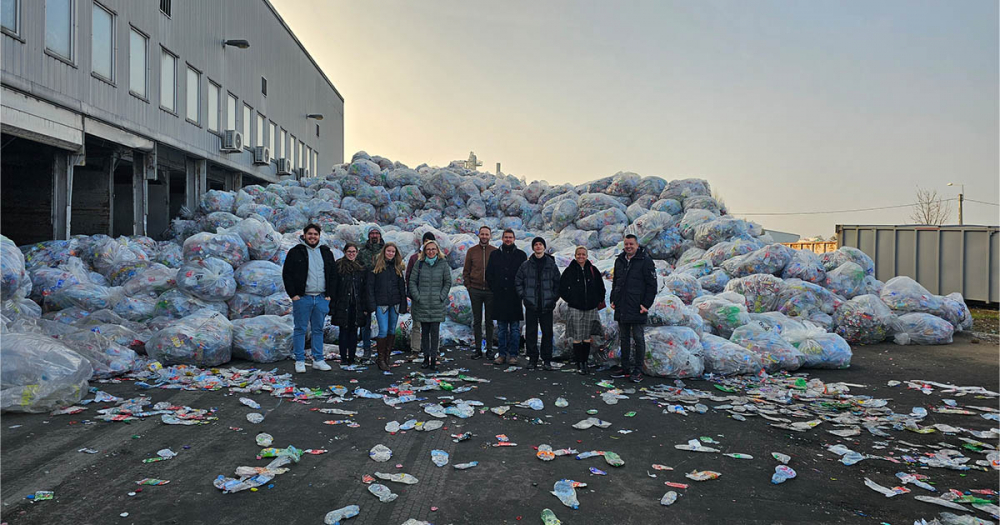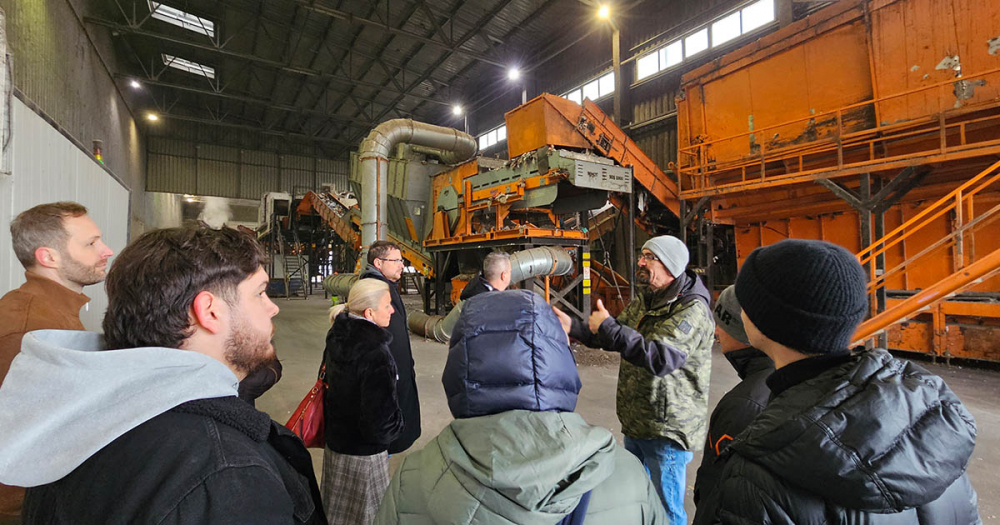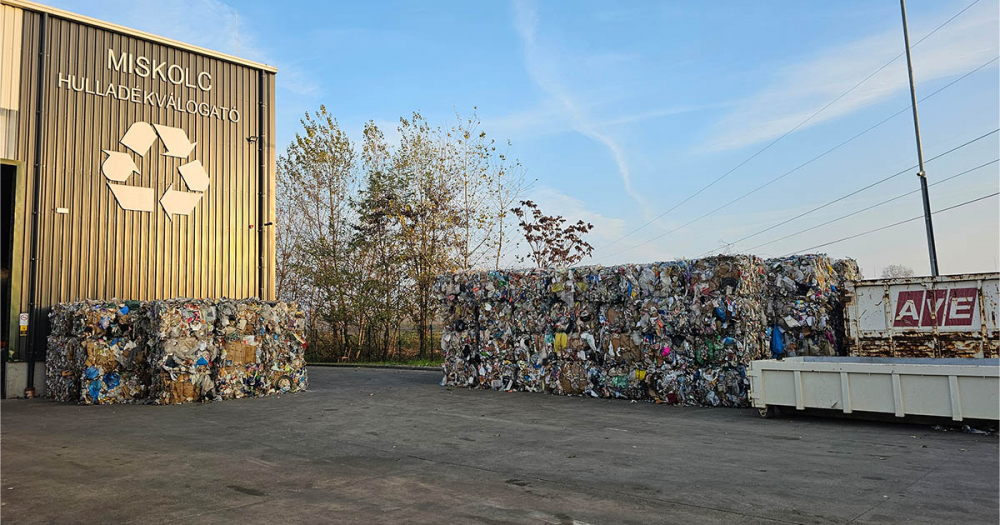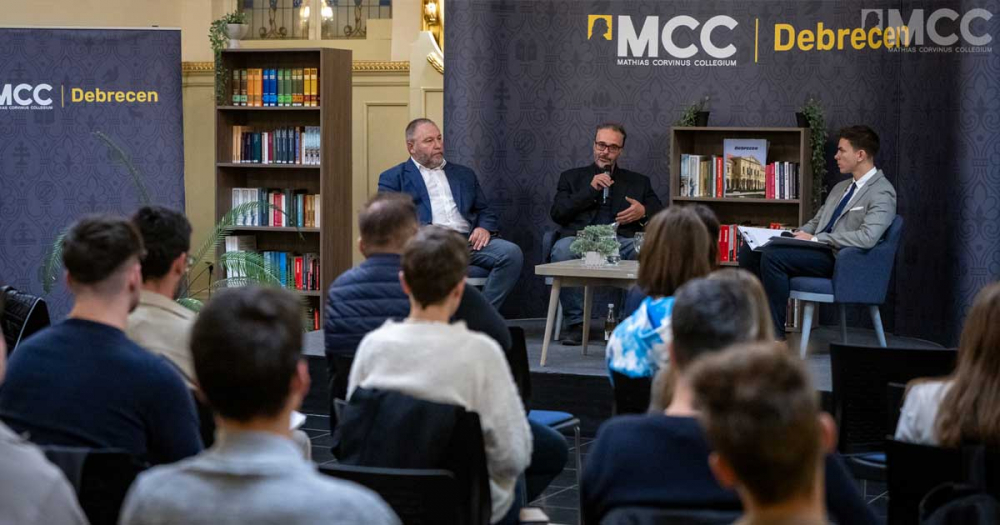The staff of the Climate Policy Institute, together with students, visited the MiReHu Miskolc Regional Waste Management Ltd. facility. The purpose of the visit was to gain firsthand insight into the functioning, challenges, and opportunities of the waste management system. Below is a detailed account of the experience, highlighting the importance of a circular economy, which opens new perspectives on sustainability.
Reuse Center: The Engine of Sustainability
The Miskolc Reuse Center (MRC) is a model facility designed with the principles of environmental awareness. The center provides an opportunity for the public to hand over items that are still usable but no longer needed. These items can benefit others, reducing waste and promoting the efficient reuse of resources.
Items accepted at the center include:
- Furniture, sports equipment, and kitchen tools in good condition,
- Books and safely usable (non-electronic) household items,
- Any other items that may still be valuable to someone else.
It is important to note that the MRC does not accept electronic products. The items deposited here are available to anyone, fostering a culture of community sharing and sustainable consumption.
MakuTruck: Innovative Education for the Younger Generation
One of the most exciting parts of the visit was trying out the electric garbage truck, the MakuTruck. This uniquely designed tool not only provides a fun experience but also conveys essential knowledge about proper waste collection. The program makes the waste management process comprehensible and entertaining for the younger generation.
Currently, three MakuTrucks are available, forming an integral part of awareness programs. The use of electric vehicles is not only environmentally friendly but also contributes to promoting sustainable mobility.
Waste Explorer Application: Digital Treasure Hunt in the Name of Sustainability
The Waste Explorer application is an innovative geocaching game that guides participants through various stations at the facility. The game combines digital technology with traditional gameplay elements while imparting critical knowledge about waste management.
During the adventure, children and young people learn about different types of waste and the technologies associated with their treatment. Teams guided by the application collect puzzle pieces that ultimately assemble into a mascot figure. This experience-based learning effectively fosters sustainable thinking.
MakuLand (R-Park): A Symbol of the Circular Economy
The next stop of the visit was MakuLand, which consists of two main parts: a nature trail and an outdoor community area. The park's design reflects the principles of the circular economy, symbolized by the circular shapes of the trail's stations.
The stations on the trail demonstrated how packaging materials are made, how they can be recycled, and even how they can be used creatively. One of the most striking elements was the “photoShock wall,” which showcased a month's worth of packaging waste from a single person, emphasizing the scale of the problem. Visitors were supported by audioguides, enabling them to explore the trail independently.
Waste Sorting and Processing: European-Level Technology
During the visit, we observed the processing of both selectively and mixed collected waste. The facilities, equipped with state-of-the-art European technology, enable the efficient sorting and recycling of waste.
The Fate of Selectively Collected Waste: Sorting Plant (Miskolc)
The visit to the sorting plant offered an in-depth look into the complex process of handling selectively collected waste. Delivered waste arrives in bulk at the treatment hall, where it is transferred to the bag-splitting equipment using front loaders. Here, bags are opened, and their contents are emptied before the waste continues along conveyor belts.
One critical step is the air separator, which uses adjustable airflows to separate lighter fractions such as PE film. Larger waste items are caught on a rotating drum with specialized spikes, which are then manually sorted. The remaining waste is processed in a magnetic separator that removes magnetizable metals.
Further processing is carried out using a ballistic separator, which creates three fractions: three-dimensional waste (e.g., PET bottles), two-dimensional waste (paper), and fine granular materials. The latter is filtered out through screens. Optical sorters are used for further separation of plastics and papers, while eddy current separators sort non-magnetic metals such as aluminum. The process ends with manual final sorting to ensure quality.
Selective sorting is a continuously evolving field, and the plant adapts to new challenges, such as changes brought about by the introduction of a deposit return system. This flexibility and innovation ensure sustainable waste management.
The Fate of Mixed Waste: Fuel Production Plant (Hejőpapi)
The visit to the Hejőpapi plant was particularly fascinating, as it demonstrated the energy recovery process for mixed municipal waste. The first stop was the treatment hall, where waste arrives in bulk or baled form. From the interim storage area, loaders and conveyor belts transport the waste to a pre-shredder for homogenization.
After pre-shredding, the waste passes through an electromagnetic metal separator, which removes magnetizable metals for recycling. Non-metallic materials are screened by large sieves called drum screens. The fine fractions are sent to a nearby landfill, while the remaining materials undergo further processing.
Air separators extract lighter fractions such as paper and PET plastics, while optical sorters remove halogen-containing materials. Heavy fractions suitable for energy recovery are subjected to secondary shredding. The resulting fuel, known as SRF (Solid Recovered Fuel), is used industrially, for instance, in cement factories.
This process not only reduces the burden on landfills but also significantly contributes to resource reuse and energy efficiency. The technological sophistication and complexity of the Hejőpapi plant are impressive examples of how waste can be transformed into valuable resources.
The experiences gained during the visit underscored that the circular economy is not only key to sustainability but also holds significant potential for communities. The technologies and programs implemented at the MiReHu facility are exemplary, highlighting the shared responsibility of improving resource efficiency and reducing waste. The study visit was an eye-opening experience for all participants, reinforcing the belief that realizing the circular economy is not only necessary but also achievable. Such visits are essential for the next generations to recognize the importance of sustainable living and actively contribute to it.







